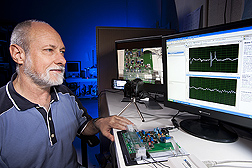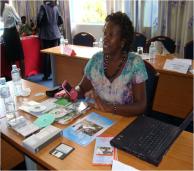Ecuadorian banana Fairtrade association La Asociación de Pequeños Productores Bananeros (APPBG) has recognized the potential of going digital.
In Ecuador, the association has received computers and training from Computer Aid to help improve farmers access to the marketplace and improve IT literacy to boost rural livelihoods.
APPBG in el Guabo, is one of the largest Fairtrade associations in Ecuador’s rural El Oro region. With a membership of over 450 small to medium sized banana producers, APPBG export 50,000 boxes of bananas a week, which are then exported to Europe.
Producers who sell through APPBG cooperative are guaranteed a stable price, which covers the cost of production when market prices go down. As a Fairtrade Labeling Organisation (FLO) approved body, APPBG provides an equitable platform from which to trade in international markets. The association also encourages consumers to make ethical considerations when purchasing imported products. FLOs are able to issue the Fairtrade logo, which is now recognized around the world as a guarantee that producers have received a fair price for their goods.
In addition to guaranteed prices for their produce, members also benefit from the association’s social projects. The computers are being used to strengthen Trade Union activity in a country with limited enforcement of worker’s rights and are also being used to improve day-to-day operations within this fast growing enterprise.
Close to Ecuador’s southern boarder, APPBG has established a network of 17 primary schools for the families of its producers. Indigenous children in these schools are now using PCs donated to provide them with the opportunity to become ICT literate.
The integration of ICTs into the APPBG association’s will help streamline their accessibility to the marketplace and the training will help sustain their efforts.








































